
Top 6 Incredible Shopping centers in Alicante
Discover the best shopping centers in Alicante. Restaurants, fashion, cinema and many more.

Alicante, a captivating city on Spain’s Mediterranean coast, is a destination blessed with a sun-drenched climate, where the sun shines more than 300 days a year. This ideal weather sets the stage for a memorable visit, whether you’re lounging on pristine beaches or exploring the historic Santa Bárbara Castle, perched high above the city, offering panoramic views of land and sea. And, of course, no trip to Alicante is complete without savoring its world-famous paella, a culinary masterpiece that captures the essence of Spanish cuisine and coastal living. This enchanting city beautifully blends climate, history, and gastronomy, making it a must-visit destination.
1 Discover the breathtaking Santa Bárbara Castle perched high above Alicante, offering panoramic views of the city and the Mediterranean Sea.
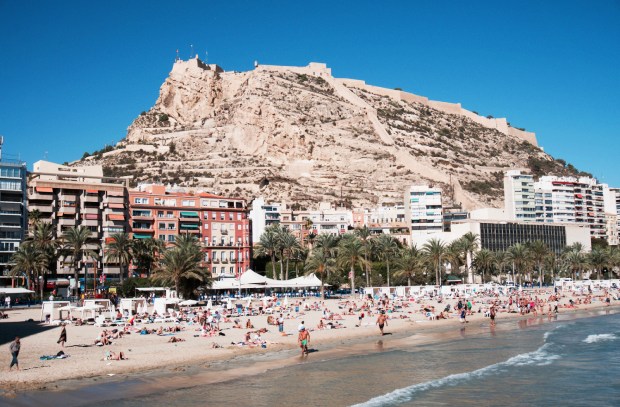
This grand castle, perched on the peak of Mount Benacantil, has been the guardian of the city for countless centuries. With roots dating back to the 9th century, this fortress is a journey through time. Its imposing walls, shaded courtyards, and well-preserved architecture provide a window into Alicante’s past. As you explore its ancient chambers and viewpoints, you’ll be rewarded with breathtaking panoramic views of Alicante and the Mediterranean Sea. Santa Barbara Castle is not only a historical testament but also a unique vantage point to understand this beautiful coastal city. Enjoy your visit!


If you’re wondering how to access the Castle, it’s very simple.
In front of Postiguet Beach, you will find an elevator that allows you to go up quickly and effortlessly. However, you might have to wait in a queue, and the wait time can vary depending on the time of year you visit the Castle. The months with the highest number of visitors are June, July, and August.
If you are visiting Alicante in a cruise, all people will choose this option and you will wait a lot of time in a queue. I don’t recommend this method and i’m sure you will enjoy more if you choose other alternatives which you can read below.
The elevator is open from Monday to Sunday 10 am – 8 pm (7:30 pm last time). The general ticket price is 3€, but it’s free for pensioners, individuals over 65, and children under 5 years old.
The best way to find the current price & timetable at the time of your visit is to check the official Castle website.
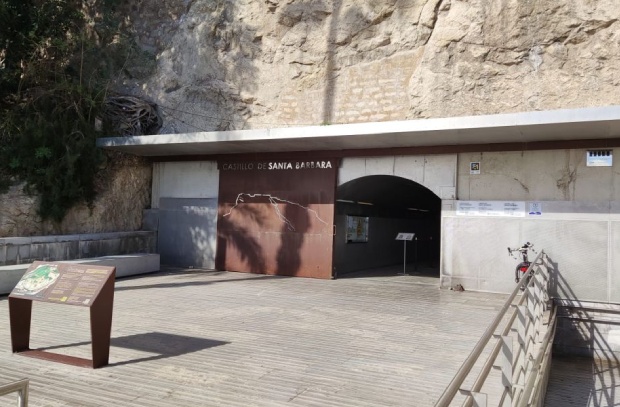
In addition to the elevator, there are other ways to get to the Castle. While there is no public transportation that goes up, you can take a taxi or Cabify as Uber does not operate in the city. Depending on the starting point, the fares range from 5-10€.
Here are some example routes:
– From the Central Market: 5-7€
– From the Meliá Hotel: 7-9€
– From the Cruise Terminal: 8-10€
To request a taxi, call +34965101611.
Alternatively, you can walk to the Castle from the City Hall or the Marq-Castillo tram station. The latter route is known mostly by Alicante residents.
First, the route from the City Hall is my personal recommendation. It takes approximately 25 minutes, and you’ll walk through one of the city’s most culturally rich neighborhoods. This neighborhood is Santa Cruz, known for its native Mediterranean architecture and urbanism. Another piece of advice is to carry a water bottle, hat, and sunscreen, especially between April and October.
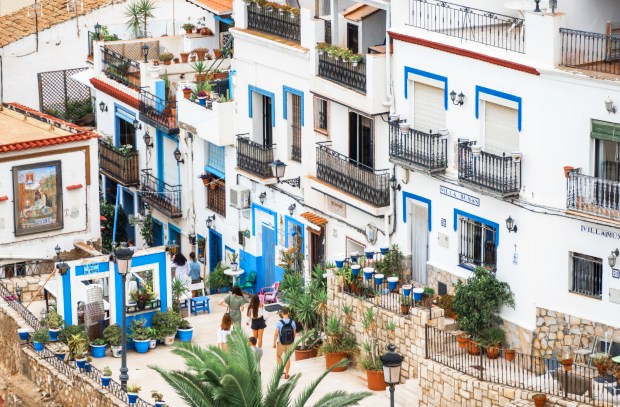
Finally, the route to walk up from the Marq-Castillo tram station takes about 20 minutes and is not very strenuous. It’s an interesting option for those who want to stop at the tram station and save on the elevator ticket.

2 Immerse yourself in history at the historic Old Town, where charming streets, lively plazas, and ancient architecture await your exploration.
The historic center is one of the most emblematic places in the city. In it, you will find streets, churches, and monuments full of history that tell the past and present of Alicante. Some of the points of interest I recommend you visit are: Alicante City Hall, Co-Cathedral of St. Nicholas, Basilica of Santa Maria, and the Santa Cruz Neighborhood.
Walking through the city to reach each of the places is my recommendation. Surely, as you walk from one point to another, you’ll come across some corner that catches your eye for taking a few photos.
The Alicante City Hall is an impressive Baroque-style building that stands as an architectural icon in the heart of the city. Located in the Town Hall Square, this imposing structure houses the local administration and is a symbol of Alicante’s rich history and culture. Its façade boasts ornate details and a clock tower that rises majestically. Citizens and visitors come here for administrative matters and also to admire the architecture and explore the surrounding square, which is a hub of social life and civic events. The Alicante City Hall is a testament to the city’s heritage and a landmark reference.
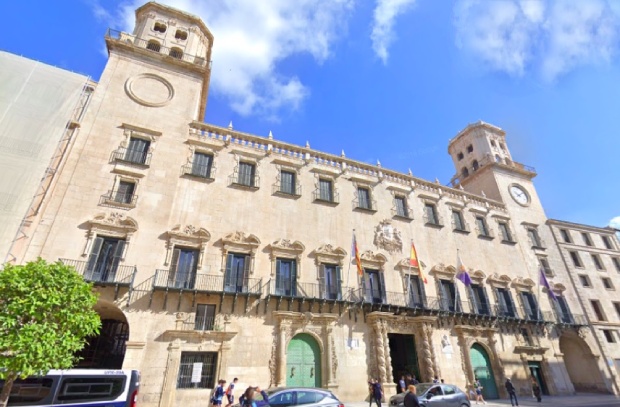

The Co-Cathedral of San Nicolás in Alicante is an architectural treasure that combines Gothic, Renaissance, and Baroque elements. Its imposing facade rises above Abad Penalva Square, distinguished by its intricate sculptures and ornate details. The interior is equally impressive, featuring ribbed vaults and gilded altarpieces. This church, built on the site of a former mosque, was elevated to the status of a co-cathedral in 1959. One of its most notable features is its splendid Baroque organ. The Co-Cathedral of San Nicolás is a place of great historical and spiritual significance that represents the cultural and religious heritage of Alicante.
To see the visiting hours and more information, you can check the official website.

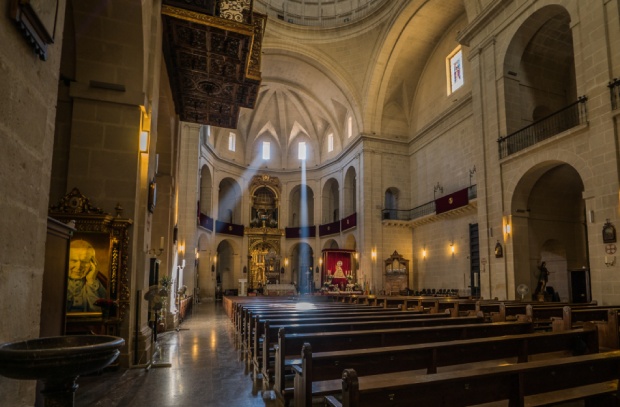
The Basilica of Santa Maria in Alicante is an architectural gem that stands majestically in the heart of the old town. Its construction dates back to the 14th century and combines Gothic, Baroque, and Renaissance influences, creating an astonishing fusion of styles. Its ornate facade and imposing bell towers are iconic. Inside, the main altarpiece is a masterpiece of Spanish Renaissance. The basilica has survived centuries of history and is a symbol of Alicante’s cultural richness. Visitors can explore its interior, marvel at its architecture, and enjoy the serenity offered by this sacred place.
To see the visiting hours and more information, you can check the official website.
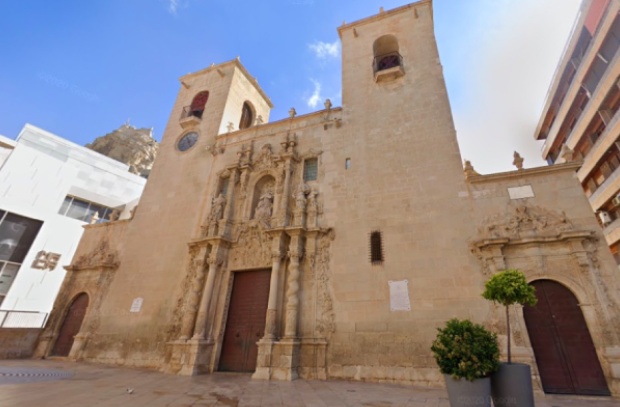

The Santa Cruz Neighborhood in Alicante is a charming historic corner radiating authenticity and Mediterranean vibrancy. Its narrow cobbled streets are adorned with whitewashed houses embellished with colorful pots and hanging flowers. This urban labyrinth, nestled on the slopes of Mount Benacantil, offers breathtaking panoramic views of the city and the sea from the Santa Cruz viewpoint.
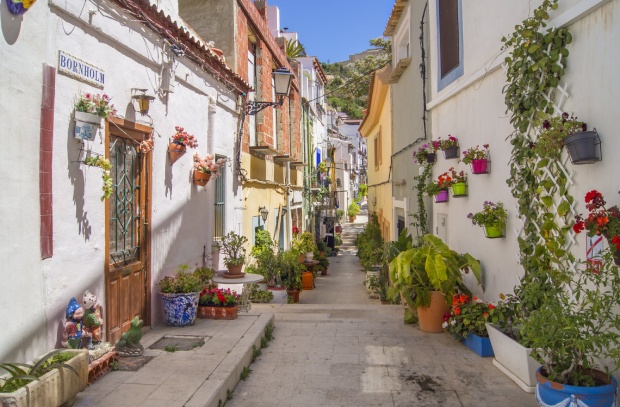
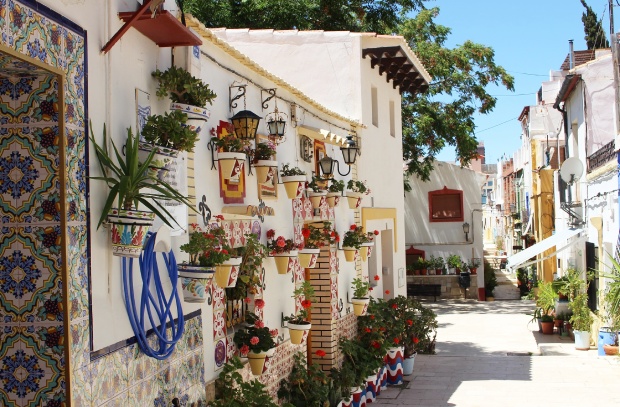
3 Stroll along the vibrant Explanada de España, a stunning promenade lined with palm trees, artisan stalls, and lively cafes, right next to the sea.
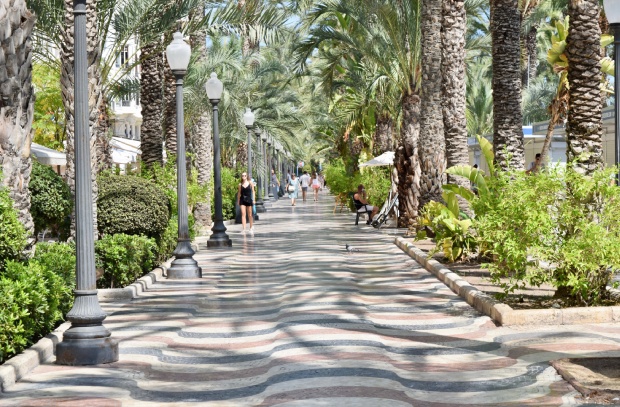
The most distinctive feature of the Explanada is its undulating mosaic pavement, composed of six million marble tiles arranged in abstract patterns that mimic the waves of the sea. This unique design has become one of the hallmarks of Alicante and offers an unparalleled visual appeal.
Along the promenade, visitors can enjoy numerous restaurants, bars, and ice cream parlors that offer a wide variety of Mediterranean dishes and fresh seafood. The colorful kiosks that line the Explanada are ideal for savoring horchata, a refreshing tiger nut milkshake, or enjoying an ice cream with views of the sea.

Its history dates back to the 19th century when it was conceived as an urban expansion project. The Explanada was designed by the architect Francisco Fajardo in 1856 and was built on reclaimed land from the sea.
Originally, the Explanada was called the “Paseo de la Explanada,” and it was covered with sand, a feature that gave it its name. In 1957, a significant renovation was carried out, giving it its current appearance with a mosaic of undulating tiles in red, white, and black shades resembling ocean waves.

4 Delight in the flavors of the Mediterranean with a visit to the Central Market, where you can savor fresh, local produce and regional delicacies.

The Central Market of Alicante, also known as the “Central Food Market,” is a historic landmark of the city that has played a crucial role in the lives of Alicante’s residents for over a century. Its history dates back to the late 19th century when the need for a covered and organized market became evident in the rapidly growing city.
The market was designed by architect José Guardiola Picó and was constructed between 1911 and 1912 in a modernist style, featuring a wrought-iron structure and stained glass windows that flood the interior with natural light. This unique architectural design gives it a special charm.

Over the years, the Central Market has witnessed the city’s evolution and its gastronomy. During the 20th century, the market became the epicenter of the daily lives of the people of Alicante, where families would come to purchase fresh and high-quality products. Today, it remains a vibrant place where visitors can enjoy a wide variety of fresh foods, from fish and seafood to fruits, vegetables, and local products.
The Central Market of Alicante is more than just a market; it is a symbol of the city’s tradition and culture, a place where the past and present intertwine through food and community. Its historical legacy and its role in local life make it a must-visit for those who wish to experience the authentic essence of Alicante.

5 Unwind on the golden sands of Postiguet Beach, a beautiful city beach just steps from the heart of Alicante, perfect for a relaxing coastal escape.

The Playa del Postiguet, in the charming city of Alicante, is a coastal dream destination that combines the natural beauty of the Mediterranean Sea with the convenience of urban life. This beach is located in the heart of the city, next to the iconic Mount Benacantil, where the Santa Barbara Castle stands.
A promenade lines the beach and offers a wide variety of restaurants, bars, and shops where you can savor traditional Mediterranean dishes and enjoy refreshing beverages. The proximity to Alicante’s historic center adds a cultural touch to the experience, as you can combine a day at the beach with a visit to historic sites and indulge in local gastronomy.

El Postiguet is a popular destination for both locals and tourists, and its relaxed and welcoming atmosphere makes it a perfect spot for families, couples, and friends alike. It offers the opportunity to bask in the sun, sand, and sea amid the vibrant city life, making it an unforgettable destination on the Spanish coast.

Discover the best shopping centers in Alicante. Restaurants, fashion, cinema and many more.

Do you want to visit Alicante and only have one day to do it? This is your post!
So usefull!!
[…] ONE DAY TOUR […]